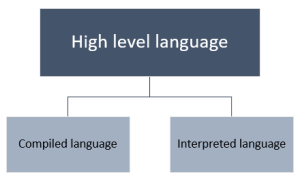BCA 1st Year High Level Language Notes Study Material
Semester Wise BCA 1st Year High Level Language Notes Study Material: If you choose to do a Bachelor of Computer Applications, it is BCA. BCA is a three-year program in most universities. After getting enrolled for BCA, there are certain things you require the most to get better grades/marks in BCA. Out of those, there are BCA Notes and BCA Semester Wise Notes Study Material, BCA Question Answers along with BCA Previous Year Papers. At gurujistudy.com you can easily get all these study materials and notes for free.
If you are a BCA Student there is a single-stop destination as far as preparation for BCA Examination is concerned. Here in this post, we are happy to provide you with the Topic Wise & Chapter Wise BCA 1st Year High Level Language Notes Study Material.

BCA 1st Year High Level Language Notes Study Material
High Level Language: The time and cost of creating machine and assembly languages were quite high, which motivated the developers to develop the high level languages.
Example: The program shown below is written in BASIC language to obtain the sum of two numbers.
10 LET X = 7
20 LET Y = 10
30 LET SUM = X+Y
40 PRINT SUM
50 END
Since, a machine can understand only an object code, a high level source program must be translated into object code, this is done by a compiler or interpreter.
High level (or Third generation) programming languages fall into three categories: (a) Procedure-oriented (b) Problem-oriented and (c) Object-oriented languages.
1. Procedure-Oriented Languages
These are designed to facilitate the accurate description of algorithms, procedures, or routines belonging to a certain set of procedures. Procedure-oriented language permits flexibility to model almost any scientific or business procedure. In it, instructions are written sequentially and processed according to program specifications.
2. Problem-Oriented Languages
These are designed for handling problems in certain broad application types related to scientific, mathematical, engineering or to business systems. The emphasis of problem-oriented languages is on input and the desired output than on the procedures and mathematics involved. It enables the user to write statements in a form with which he/she is familiar (e.g., in mathematical notation or in English). It reflects the concepts of a particular application area, e.g., SQL for database applications.
3. Object-Oriented Languages
This approach of programming evolved in the 1970s and combines the good features of structured programming in a different manner to organize a program. OOP deals with the overall organization of the program. The basic features of an OOP are self-contained objects, which have their own properties and functions that operate on these properties encapsulated into a single unit known as encapsulation.
These objects interact with each other to perform various actions. The data of an object can be accessed only by the member functions, known as data hiding. Operator overloading, inheritance, and polymorphism are other main features of OOP.
Few High level languages are FORTRAN (FORmula TRANslation), COBOL (Common Business Oriented Language), BASIC (Beginners All-purpose Symbolic Instruction Code), PASCAL (named on a mathematician, “Blaise Pascal”), PL/I (programming language one), ALGOL (ALGOrithmic Language), APL (A Programming Language), Ada, LISP (LISt Processing), SNOBOL (String Oriented SymBOlic Language), C, PROLOG (PROgramming in LOGic).
Advantages
There are four main advantages of high-level programming languages. These are:
1. Readability: Programs written in high-level languages are more readable than in low-level languages.
2. Portability: Programs could be run on machines of different architecture with small or no change.
3. Easy Debugging: Errors could easily be removed (debugged).
4. Easy Software Development: Commands of programming language are similar to natural languages like English language. Therefore, software could easily be developed.
Limitations
The limitations of high-level programming are as follows:
1. Lower Efficiency: Take more time to run and require more main storage.
2. Lack of Flexibility: Some tasks cannot be done in a high level language, or can be done only with great difficulty.
BCA 1st Year High Level Language Notes Study Material
Chapter Wise BCA 1st Year Computer Fundamentals and Office Automation Notes Study Material